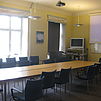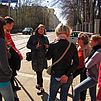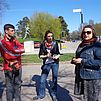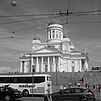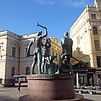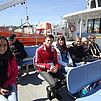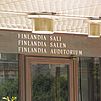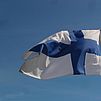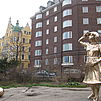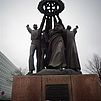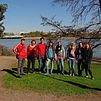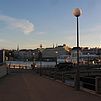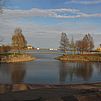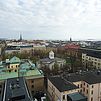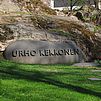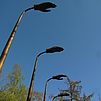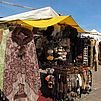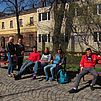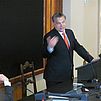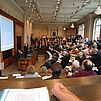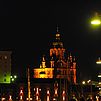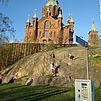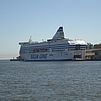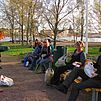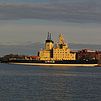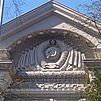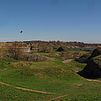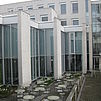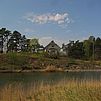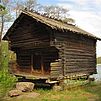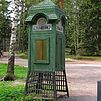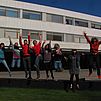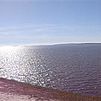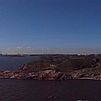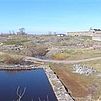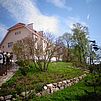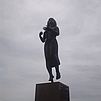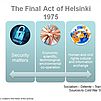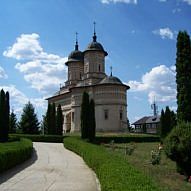
Studienexkursion nach Helsinki 2013
Home / Exkursionen / Helsinki 2013
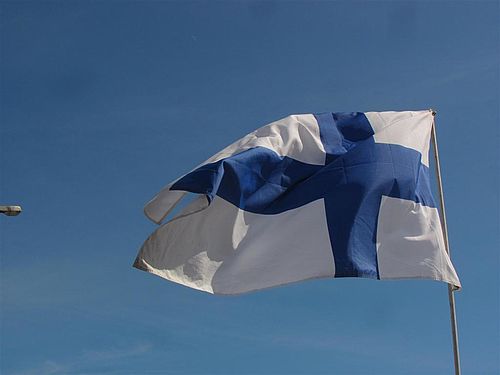
In the context of the advanced class “Socialism – Détente – Transition: Sources to Cold War Studies,” seven students travelled to Helsinki, Finland, under the supervision of University lecturer Natali Stegmann, member of the Department of Southeast and East European History at the University of Regensburg. It was a 7-day trip right at the beginning of spring in Finland, so the group witnessed the excitement of the Finnish people about the sun shining nearly all week long. Upon arrival, the group was also astonished to see that the Finnish people appreciate Mother’s Day so much that even all shops were closed on this day. Then again, at the end of the week, the group got to know another Finnish tradition: Every three months on one Saturday everybody who likes to do so is allowed to open his or her own little restaurant for one day, even if it might just consist of one table or a window bench – an opportunity that many Finnish people seize.
However, the aim of the field trip was not only the touristy exploration of the Finnish capital. Rather, it was on the one hand, the discussion of the terms Socialism, Stalinisation, Détente and Transition as well as an approach to the behaviour of the Eastern and Western Bloc. On the other hand, another core question was about the role of Finland during the Cold War, with a special focus on the role of the Helsinki Conference of 1975 in the process of rapprochement of the two blocs during the collapse of the bipolar world.
Program of the stay in Helsinki (PDF)
Travel Diary Helsinki
by Marina Pavlishina, Birte Richardt, Katharina Schalk
Introduction
To gain a deeper understanding of these topics, the group had one intensive prepartory class before and one follow-up after the field trip. Most central was a joint class in Helsinki together with Finnish students which was lead by Natali Stegmann. Some questions had to be answered beforehand, for example: what does socialism mean as a period and as a system, and what are the politics of neutrality and the main principles of the Final Helsinki Act. After settling those questions theoretically, the group mainly tried to approach the behaviour and motivations of the different actors in this period by analyzing the discourses consisting of talks, letters and treaties. The group also prepared short talks on each topic in order to share the knowledge with our Finnish fellow students.
How to Study Socialism?
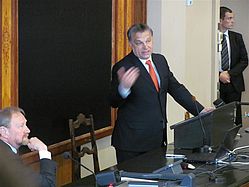
On the first day, class started a little later, as it happened that Prime Minister of Hungary, Viktor Orbán, was holding a guest speech about “The Future of Europe” at the University of Helsinki. The speech itself was mostly lacking in content, but the discussion afterwards was much more interesting as one could learn more about the Hungarian approach to certain topics (Christianity and religion in general, Roma, women in leading positions etc.).
See more: Essay about Orbán's Talk in Helsinki
Afterwards, the group went to the prestigious Aleksanteri Institute, where all the classes were going to be held, and met our fellow Finnish students for the first time. After a short introduction and discussion of the correlation of Orbáns speech to communist legacy and the still ongoing transition, the first session started with an attempt to theorize socialism not as a political concept but rather as a real existing historical period and, thereby, setting the frame for further interest in the topic. Without understanding Socialism as such, there is no understanding of post-socialist processes.
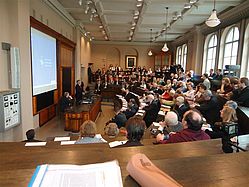 Another discussion topic was that some new currents in historical research are stating that the bipolar narrative is too limited to understand global history after the World War II, as globalization and decolonization were far more formative in a global perspective. Bearing this in mind, the group was prepared to meet members of the Cold War Research Group (CWRG, see more: www.helsinki.fi/aleksanteri/cwrg/), whose members analyze the period from 1945 until the fall of the Iron Curtain with an approach which is based on multi-level interaction. They state that on the macro level there were three parties: the USA, the USSR and the Neutrals. In their opinion, there is a significantly active micro level with many more actors who were responsible for the exchange and informal communication between the East and the West. Due this claim, it is important to the researchers to show that even before the détente period the Cold War was not only about conflict, confrontation and lack of interaction. With regard to state socialism, it is obvious that the actors crossed the borders horizontally and vertically, meaning there was also intense exchange within the Eastern bloc. Especially active and important micro-level interactions can be found in the transfer of technology and knowledge between the blocs. One very interesting thesis by the CWRG still to be proven is the strong correlation of the end of the Socialist Bloc with the interactions mainly at a micro-level during the Cold War. Not only considering the actors, but also the internationally accepted time frames concerning the phases of development of state socialism, they are suggesting that everything was far more flexible than Western scholars have suspected all along. Summing up, the CWRG is contributing to the reassessment of the Cold War and its changing perception in research and public. After this very fruitful meeting, the group explored the city by explicitly looking for the Russian heritage for example in the Kaivopuisto Park. Another stop was the statue which was erected as a symbol of the Russian-Finnish friendship.
Another discussion topic was that some new currents in historical research are stating that the bipolar narrative is too limited to understand global history after the World War II, as globalization and decolonization were far more formative in a global perspective. Bearing this in mind, the group was prepared to meet members of the Cold War Research Group (CWRG, see more: www.helsinki.fi/aleksanteri/cwrg/), whose members analyze the period from 1945 until the fall of the Iron Curtain with an approach which is based on multi-level interaction. They state that on the macro level there were three parties: the USA, the USSR and the Neutrals. In their opinion, there is a significantly active micro level with many more actors who were responsible for the exchange and informal communication between the East and the West. Due this claim, it is important to the researchers to show that even before the détente period the Cold War was not only about conflict, confrontation and lack of interaction. With regard to state socialism, it is obvious that the actors crossed the borders horizontally and vertically, meaning there was also intense exchange within the Eastern bloc. Especially active and important micro-level interactions can be found in the transfer of technology and knowledge between the blocs. One very interesting thesis by the CWRG still to be proven is the strong correlation of the end of the Socialist Bloc with the interactions mainly at a micro-level during the Cold War. Not only considering the actors, but also the internationally accepted time frames concerning the phases of development of state socialism, they are suggesting that everything was far more flexible than Western scholars have suspected all along. Summing up, the CWRG is contributing to the reassessment of the Cold War and its changing perception in research and public. After this very fruitful meeting, the group explored the city by explicitly looking for the Russian heritage for example in the Kaivopuisto Park. Another stop was the statue which was erected as a symbol of the Russian-Finnish friendship.
See more: Essay about The Russian Heritage in Helsinki's townscape (PDF)
Stalinism and De-Stalinization
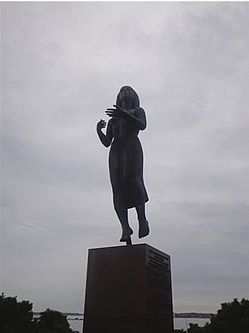
The following day, the group tried to combine the concepts of Stalinism and De-Stalinization with the knowledge about the laws of motion of socialism. In this context, De-Stalinization can be understood as a cornerstone of the further changes in the relations between the East and the West. The group tried to connect the process of De-Stalinization – which started with the XX. Congress of the Soviets in 1956 and Khrushchev’s speech about the cult of Stalin – with the collapse of the whole socialist system.
Certainly, the ongoing deterioration of socialist systems was in part due to their intertwining with the west through intellectual exchange as described above. But this exchange can’t be analyzed without a deeper understanding of the inner processes, starting with the De-Stalinization and the Détente, which also have their roots in the very nature of the socialist system. It was pointed out that not only political discrepancies within the Bloc countries – which for example lead to uprisings in Hungary in 1956, the Prague Spring in 1968 or Polish strikes in the 1980s – but also economic problems and inconsistency of socialism in the Soviet Union itself contributed to the dissolution of the USSR and the Eastern Bloc. It is very important to distinguish socialism as a political idea from the institutionalization of ‘socialist’, or better: Stalinist ideas. Some of the reasons for the economic bankruptcy of the socialist system were given by Katherine Verdery and her essay on „Theorizing socialism, a prologue to the 'transition’”. A second economy developed and proved necessary for the people and therefore being the system to prevail for the moment, while it also showed the dysfunctionality of the system and herewith hinted on the later breakdown. In the same way, through the dictated socialist realism and the party’s monopoly of meaning and language on the one hand, and the Samizdat culture on the other hand, a first and second intellectual market coexisted as well. The fact that, in the economical as well as the intellectual life, both first and second market were needed in order to keep the system going, showed the self-destabilizing paradox of this system and the actual weakness of the would-be-omnipotent power.
Thanks to the joint class with Finnish students, everyone was able to gain a deeper understanding of the very special role Finland played in détente and exchange, and to discuss the question whether Finland has actually been part of the Cold War or ‘member’ in any bloc. In the afternoon, Suvi Kansikas, a post-doc fellow at the Aleksanteri Institute, continued discussing this perspective by leading the group on a “Cold War Trip” through Helsinki, giving insights into how important for example the Olympic Games of 1952 were or how the Helsinki Conference at the Finlandia Hall was actually organized.
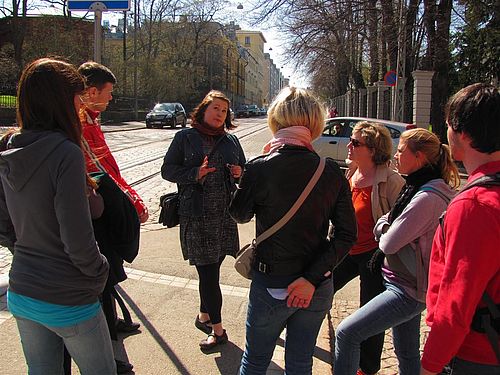
Actors of Détente
On Wednesday, the term Détente as well as its impact on the Cold War was defined. Socialism as a period and Stalinism, De-Stalinization and the system’s weakening from within and outside were bound together. Here, the multilayered approach can also help to understand the surviving and the collapse of the system, since there were real people acting, with different interests, not just ‘East’ and ‘West’, not only Politburo and workers. But who exactly were those actors?
Again, the important role of Finland comes to light, since it was in a geographically important position and therefore able to switch perspectives in certain political situations. CSCE (Conference on Security and Co-operation in Europe) taking place in the Finlandia Hall in 1975 is said to have been the peak of Détente’s. But even though Détente as such was polarizing at that time, it became clear that the Iron Curtain perforated slowly.
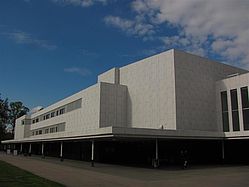 Détente had different phases, maybe there even were diverse détentes, but it is commonly understood to be the period of the late 60’s and 70’s. The surprising aspect about the CSCE was not so much that it took place, but that everyone actually attended it. Beneath the Western idea that change could only happen by rapprochement, the decisive frame of the CSCE and the détente was the fear of a nuclear war and people longing for sustainable peace. After all, the Helsinki Final Act was certainly rather a diplomatic symbol than having any impact on everyday life, but since it had to be published in all signing countries’ languages its prior achievement was to change public thinking in the Eastern bloc.
Détente had different phases, maybe there even were diverse détentes, but it is commonly understood to be the period of the late 60’s and 70’s. The surprising aspect about the CSCE was not so much that it took place, but that everyone actually attended it. Beneath the Western idea that change could only happen by rapprochement, the decisive frame of the CSCE and the détente was the fear of a nuclear war and people longing for sustainable peace. After all, the Helsinki Final Act was certainly rather a diplomatic symbol than having any impact on everyday life, but since it had to be published in all signing countries’ languages its prior achievement was to change public thinking in the Eastern bloc.
In the afternoon, the students explored the island of Suomenlinna, which can be reached in only 20 minutes by ferry. Once used as a protection by the Swedish against the Russian expansionism, it is now a UNESCO World Heritage site where tourists and locals can visit museums and enjoy the picturesque places for a picnic.

Détente and Transition
The session of the last day was mostly about the transition from Socialism to democracy and market economy. The main emphasis was put on Poland and Czechoslovakia and their development after the fall of the Iron Curtain. On the one hand, the group analyzed some Samizdat and Dissident letters from Poland and Czechoslovakia, compared them to official and unofficial talks from socialist leaders and tried to relate them to all the concepts and theories heard about. For example, in the Samizdat culture, one could see that the dissidents did not actually criticize the idea of socialism itself, but its realization, which again led to a loss of legitimacy of the leaders. On the other hand, the main questions were when transition actually started, and if one could already take the dead of Stalin, the Prague Spring or the Final Helsinki Act as its trigger. It can certainly be stated that the Human Rights set in the Final Helsinki Act, and even more precisely the knowledge and communication about them, played an important role in the overall peaceful transition of the post-socialist countries.
In the afternoon, Prof. Barbara Falk, a Canadian fellow researcher at the Aleksanteri Institute, added a new and challenging perspective to our topic by giving a talk about the “Dichotomy of Dissidence: Reassessing Freedom Fighters and Moscow Dupes”. The topic of her research gives us a chance to look at the problem of dissidence from another perspective, i.e. dissidents are not only those persecuted in the East but – according to her – also those who were under surveillance and prosecuted in the USA for their non-conformism. The main motivation of Barbara Falk was to show that in spite of the American ‘pluralist democracy’, communists or people who were suspected being it, obviously weren’t worth having a freedom of speech or opinion, but were persecuted under circumstances as unfair and arbitrary as dissidents in the East. From a students’ point of view, it was interesting to see North American methods and approaches of researching the Cold War.
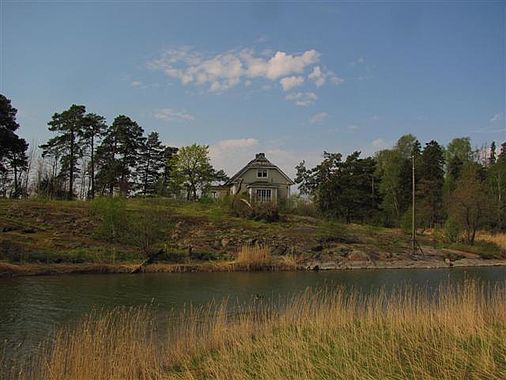
Kekonnen & Seurasaari
On Friday, the last day of the field trip, the group spent most of the time visiting tourist attractions, as for instance the open-air museum Seurasaari as well as the Urho Kekkonen Museum.
Overall Résumé
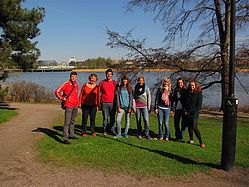 The field trip was in many ways very interesting and astonishing, not just in terms of content but also with regard to everyday life. The language was perceived as very different from other languages and yet of nice sound. One of the most exciting moments was a karaoke singing night, which apparently is a much loved national sport. Without understanding the content of the lyrics, the group was able to keep up with the locals. The prices in supermarkets, student’s canteens and bars were rather shocking. However, the group agreed that the city had to offer the best smoked salmon….
The field trip was in many ways very interesting and astonishing, not just in terms of content but also with regard to everyday life. The language was perceived as very different from other languages and yet of nice sound. One of the most exciting moments was a karaoke singing night, which apparently is a much loved national sport. Without understanding the content of the lyrics, the group was able to keep up with the locals. The prices in supermarkets, student’s canteens and bars were rather shocking. However, the group agreed that the city had to offer the best smoked salmon….
- Fakultät für Philosophie, Kunst-, Geschichts- und Gesellschaftswissenschaften
- Institut für Geschichte
Lehrstuhl für Geschichte Südost- und Osteuropas
Universität Regensburg
Universitätsstrasse 31
93053 Regensburg
Telefon +49 941 943-3791
Telefax +49 941 943-5032
E-Mail



